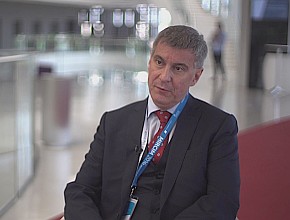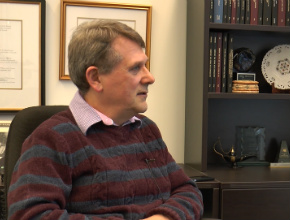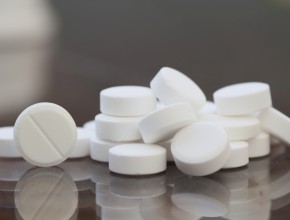References
SPRINT Research Group, Wright JT Jr, Williamson JD, Whelton PK, et al. A Randomized Trial of Intensive versus Standard Blood-Pressure Control. N Engl J Med. 2015 Nov 26;373(22):2103-16. doi: 10.1056/NEJMoa1511939. Epub 2015 Nov 9. PubMed PMID: 26551272; PubMed Central PMCID: PMC4689591.Roman Jaeschke: Let me introduce to you Professor Gordon Guyatt, a person who coined the term evidence-based medicine and for the last several years has been the ambassador of evidence-based health care. Gordon, I asked you to talk to us about blood pressure treatment. When I started work 30 or 35 years ago, it was said that people should have as high a systolic blood pressure as 100 mm Hg plus their age. A lot has changed since. Could you look back at the history of what we are doing with high blood pressure?
Gordon Guyatt: Way back, maybe a little earlier than when you started practice, people were uncertain whether hypertension was a good or a bad thing. Then people needed randomized trials, because some believed that if you lowered people’s blood pressure, it would actually cause strokes, that blood pressure was needed for cerebral perfusion. Since that time, there have been whole series of randomized trials that have showed deep benefits of (blood pressure) decrease, particularly in cardiovascular risk, with treatment of hypertension. The questions from the start have been: What is the blood pressure that should be the target?
People have done a number of trials of different targets, which have generally shown that the lower the target, the better. Most recently, a trial called SPRINT compared a target of a systolic blood pressure less than 140 mm Hg to a target less than 120 mm Hg and showed a small but significant mortality reduction with the target of 120 mm Hg. They did not achieve 120 mm Hg – they achieved less than 120 mm Hg in less than half their patients, so it is pretty tough. That particular population was an older population, with an average age of 68; close to 30% of the patients were over 75. Patients who were younger, had some other cardiovascular risk factors, smoked, or were male – and 65% of them were men – over a period of 3 years had a more or less 1% reduction in mortality with the lower blood pressure target. So many would say that a target of perhaps 100 to 125 mm Hg, given what they achieved in this trial, should be something we should aim at.
One other proviso is the way they measured blood pressure in this trial was with an automatic device. They left a patient in their room alone and after a few minutes the device started measuring blood pressure and was measuring it repeatedly until they got a stable blood pressure. That is probably at least 5 mm Hg lower than what you would see with the physician coming in, not necessarily giving the patient a rest period, and doing the blood pressure measurement. So the targets of 100 to 125 mm Hg would be something you might aim at if you are using this automated device. If you are using the usual busy-office manual blood pressure measurement, it would be at least 5 mm Hg higher, so we would be talking about 125 to 130 mm Hg.
RJ: Would you consider the population in this particular study to be higher risk?
GG: Well, they are certainly higher risk. They started with anybody over 50, and as I have said, the median age was 68, so half the people were older than 68, half were younger than 68. If you were younger, then you would need to be a smoker or need to have some additional cardiovascular risk factors to get into this study. So they are a higher-risk population. I would suspect that you would still see the same relative effects – in other words, you would lower your risk – if you were a younger person as well aiming at that target, but the lower your absolute risk, the lower your benefits. We’re talking about a 1% reduction in the individuals over 3 years, and in this trial, it would be appreciably less in lower-risk individuals. And then the question is: We know there are going to be side effects, there is a burden, inconvenience, possible cost – at what point does it become not worth it?
RJ: If you were to make a recommendation, if you were part of a practice guideline panel these days, deciding on what to advise physicians and patients in terms of blood pressure treatment, what would be your bottom line?
GG: My bottom line would be: In the higher-risk population, such as that enrolled in the study, I would recommend a target of 120 to 125 mm Hg. I would be ambivalent whether to make that a strong recommendation, which would imply that we should just encourage our patients to do it, or a weak recommendation, in which you would have a negotiation. To me, it would depend on if you were able to get an individual to 120 to 125 mm Hg, or even lower than 120 mm Hg, with 2 or 3 drugs with minimal side effects, which would seem to be clearly worth it. If the patient does not like taking all the drugs, is experiencing some side effects from the drugs, I think it becomes more questionable.
RJ: Do you think the SPRINT trial generated a qualitative or quantitative shift in our approach?
GG: Well, I am not sure what you mean, but it was an important shift. That is for sure.
RJ: Thank you for this one.
 English
English
 Español
Español
 українська
українська










